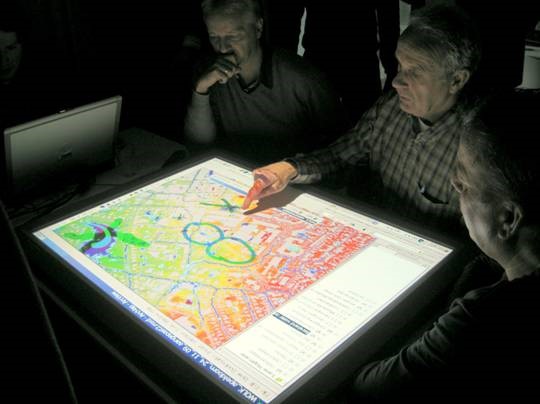Waterlogging stress test in municipality of Apeldoorn
During extreme precipitation, many sewer systems in urban areas have insufficient discharge capacity. In the municipality of Apeldoorn, this caused waterlogging and damage in 2009 and 2010. The municipality has subsequently investigated how it can tackle existing waterlogging issues and has developed a strategy to anticipate future extreme precipitation. The analysis has identified 43 locations that could potentially be affected by waterlogging.
Waterlogging stress test: set-up
This study was preceded by an analysis of rainwater discharge during extreme precipitation. The results of the analysis have been incorporated into a waterlogging landscape map. The map provides a picture of the locations that are potentially prone to waterlogging and shows how the water runs off.
The map has been discussed with the sewer system managers and compared to the waterlogging experienced in the past. On the basis of their findings, a shortlist has been drawn up of locations at which prevention of waterlogging is most urgent. In addition, they have identified locations at which simple planning measures could improve the resilience of rainwater drainage.

Image: working session to discuss the results of the waterlogging analysis
The relevant locations were subsequently discussed in a working session attended by several managers and measures were explored. A selection of such measures was examined for effectiveness.
Waterlogging stress test: results
The study and the prioritisation process have identified 43 urban and rural locations that need attention. With respect to these locations, the urgency of the situation has been determined, as has the status in terms of measures already implemented and any ongoing studies.
By reviewing the waterlogging analysis in interconnection with the performance of the sewer system, an integrated set of above-ground and subsoil measures could be drawn up. The result is an overview map of locations that the municipality intends to tackle in the years ahead and a strategy for the future.
Strategy
In order to boost the climate resilience of the public space, the municipality has developed a strategy under which the most urgent bottlenecks are tackled first. The non-urgent bottlenecks will be taken care of when they can be addressed in combination with other projects. In addition, the municipality wants to ensure that waterlogging is prevented/contained in future redevelopment projects, preferably by implementing above-ground solutions. Communication with residents regarding (acceptance of a certain degree of) waterlogging is part of the strategy.
Lessons to be learned from the project
- Conducting a stress test and drawing up a waterlogging landscape map is an effective tool to make various managing bodies aware of their roles and to encourage the municipality to take action. Flow charts in the map demonstrate that upstream measures are important. Because not all the bottlenecks identified on the map correspond to actual practice, it is important to remain critical.
- Realising adaptations in spatial planning calls for coordination among designers and various public space managing bodies. The results of the stress test provide a good lead for a debate and interaction.
Contact person
Diederik Anema
Gemeente Apeldoorn
d.anema@apeldoorn.nl
